WATCH: Zack Lucks Talks About what MedFit Network and MedFit Education Mean to His Business
Zack Lucks, MedFit member and Founder of Glyde, LLC, talks about MedFit Network and the specialty education available through MedFit Classroom.
Lost your password? Please enter your email address. You will receive a link to create a new password.
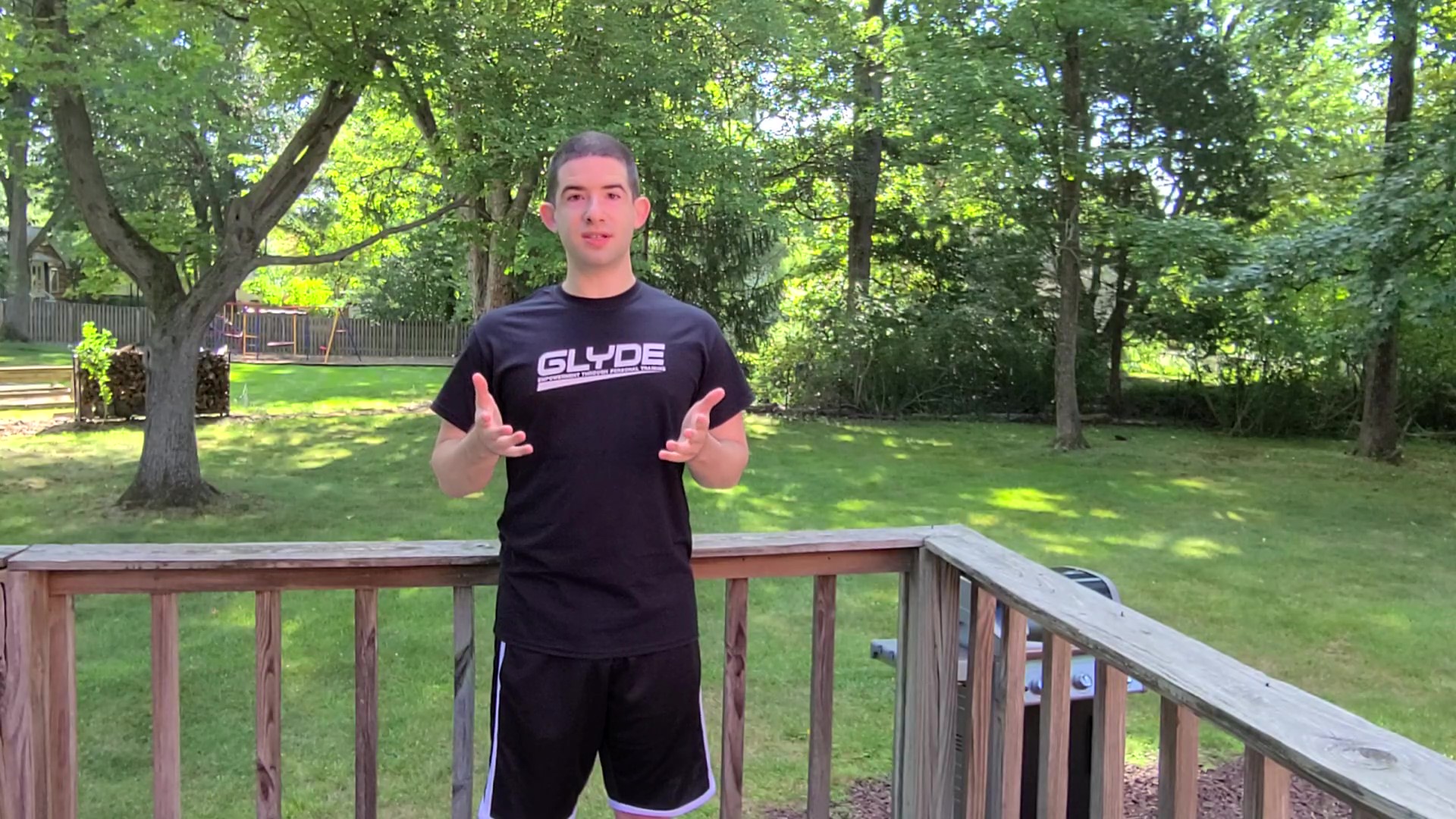
Zack Lucks, MedFit member and Founder of Glyde, LLC, talks about MedFit Network and the specialty education available through MedFit Classroom.
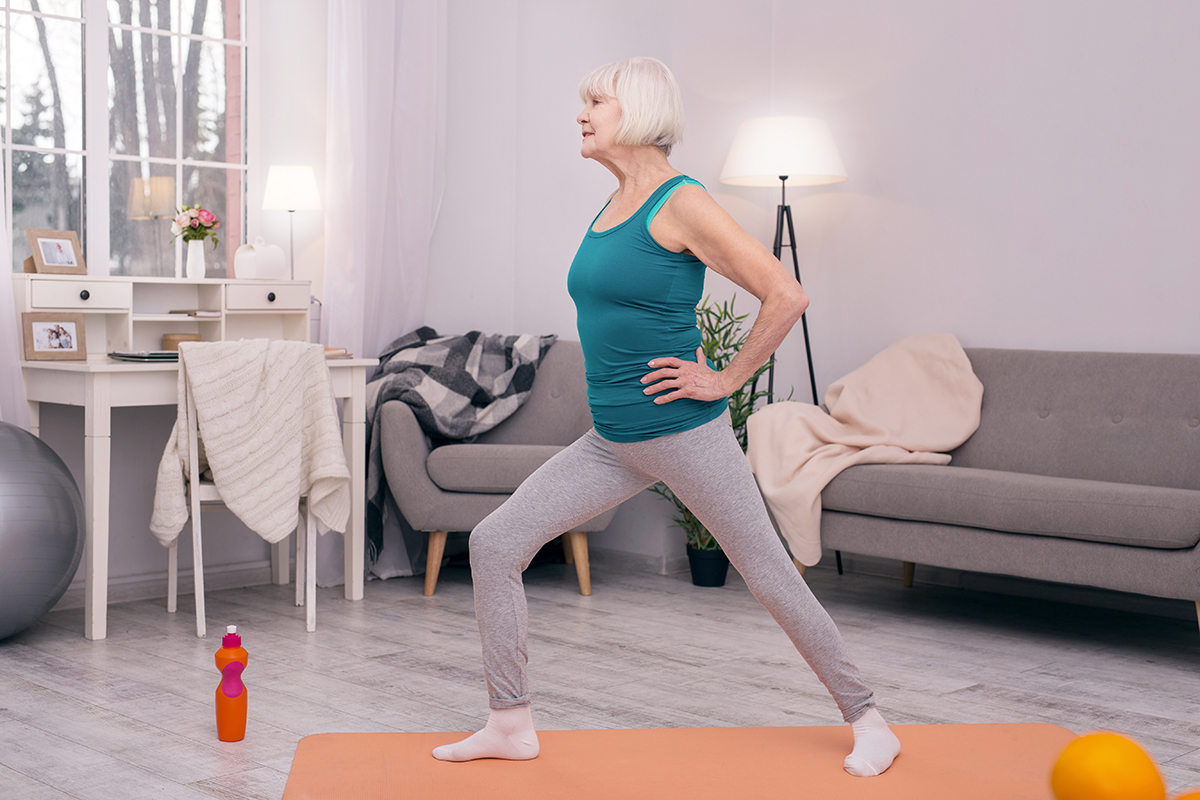
In Part 1, we discussed how a thought becomes an action, and the disconnect in Parkinson’s Disease, as well as how a Fitness Professional do to improve brain and body connection.
For those living with Parkinson’s, the three Activities of Daily Living (ADLs) considered to be most difficult to perform are:
I have provided a list of exercises to complement these ADLs as well as a “Practice Option” that combines the exercises listed.
Exercises
Advanced Practice Option: Have the client lay on his or her back. Take the right leg and swing the leg over the left leg and move into the side plank position and hold for 5 counts. From there roll to a prone plane OR bird dog position. Reverse the exercise to practice returning to the supine position.
Assisted Practice Option: If lying down is not an option, have the client sit in a chair. Have the client hold a tube with both hands in front of them. Trainer provides tension from the side and the client maintains the isometric hold while picking up one leg and moving it out to the side and bringing it back in like a seated jumping jack.
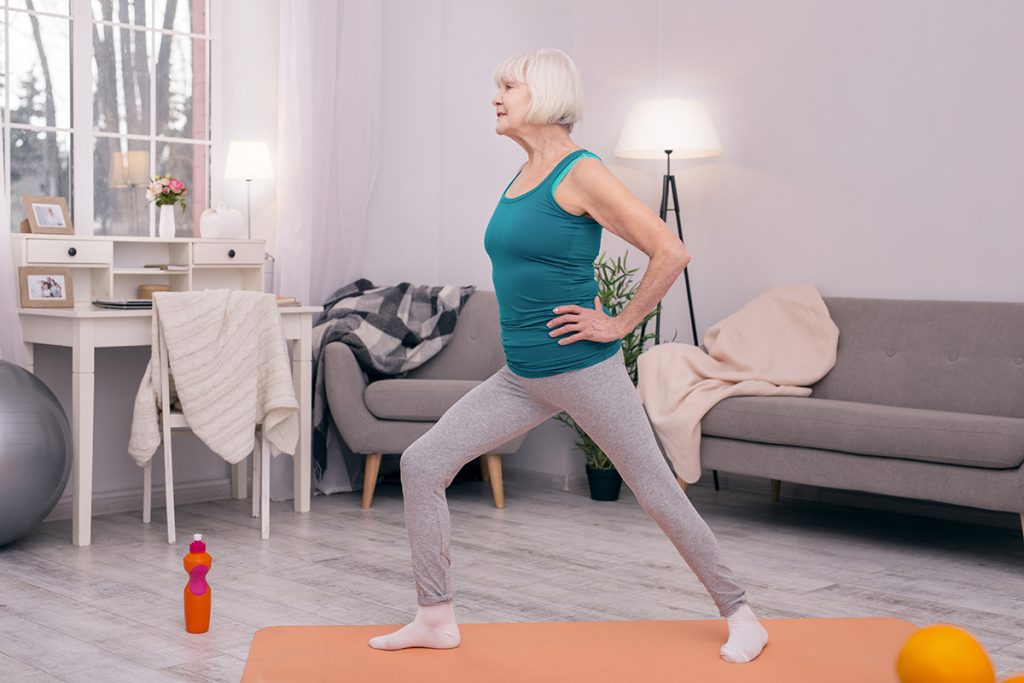
Exercises
Advanced Practice Option: (Stand with chair next to left leg). Place a hurdle next to chair to act as the “floorboard” of the car. Client will stand alongside the “car”. Client will then lift the left knee and hold for 3-5 counts then step “over the fence”/bob-n-weave” to get into the car. Reverse the motion to practice getting out of the car. Repeat on the other side.
Assisted Practice Option: (Begin in a chair and with a short hurdle or object for them to “step” over). Client is in the chair and reaches right arm out as if opening the car door (jazz hands). Client then comes back to center and picks up the right knee and steps over the hurdle and turns foot to the right (½ warrior/ ½ gong) as the entire body turns to the right. Left foot follows the right foot and steps over the hurdle. Once the feet are facing the right, have the client do a full or partial Sit-to Stand drill. Reverse the motion to practice getting into the car.
Exercises
*If client freezes at room threshold, emphasize that they want to look straight ahead and not down.
These three ADLs are just a few of the frustrating tasks people living with Parkinson’s Disease deal with each and every day. Fitness Professionals can make a real difference in someone’s life if they will take the time to consider how movement works, where it can go wrong, and what to do to help it go right again. Imagine the success your client will experience during a session and throughout the day as they tackle ADLs with minimal effort! I can tell you this, their level of confidence will soar and the future will be something they look forward to.
Working with Parkinson’s clients is an extremely rewarding experience. Check out Colleen’s course, Parkinson’s Disease Fitness Specialist to get started.
Colleen Bridges has worked for nearly 17 years as an NSCA Certified personal trainer, group exercise instructor and fitness consultant and as an independent contractor for Nashville’s first personal training center, STEPS Fitness. Her passion for understanding the body in sickness and in health, and how it moves, as fed her interest in and enhanced her talent for working with senior adults, especially those living with a neurological disorder such as Parkinson’s Disease.
Renee Rouleau is a Clinical Research Coordinator for the Department of Neurology at Vanderbilt Movement Disorder. Her research primarily focuses on the glymphatic system, a proposed waste-clearance system in the central nervous system in different neurodegenerative disorders such as Parkinson’s Disease (PD) and Alzheimer’s Disease (AD).

Director of Membership Services Christine talks about all the ways MedFit can help your practice!
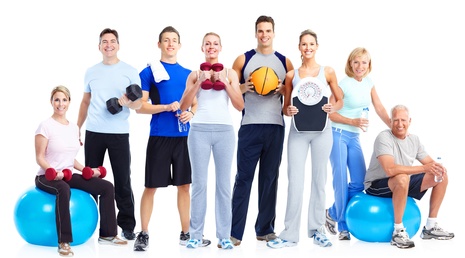
In traditional marketing to the medical community, personal trainers most often mail flyers or brochures that describe the trainer’s qualifications and what kind of programs they offer. They may even personally drop the promotional material off at the medical office hoping to snag a bit of the medical professional’s time to talk about the program they could offer patients.
Looking first at direct mailings, the average response in 2017 was 4.4% (Pulcinella, 2017), which is actually a bit higher than it has been in previous years. However, mailings can be costly, and you should always consider where your marketing money is best spent.
As for dropping off material and hoping to catch the professional on the fly, not much chance there. Schedules are tight and the likelihood of them having time to chat when you happen in is very low. Even if you try to make an appointment to introduce yourself, you are unlikely to get a meeting. Your best bet may be to get to know the receptionist (this may take multiple drop bys), explain who you are and what kind of results you can offer to patients, and have the receptionist push the idea to the medical professional.

Reverse marketing is a little different. In reverse marketing, you are not going to the medical professional to sell yourself and your services. You are going to medical professional to have them sell you. Picture this, you are a new personal trainer in town. You know the value to your clients when you can refer them to the right professional when they need something that falls out of your scope of practice. You are interviewing doctors, physical therapists, chiropractors, massage therapists, registered dietitians, etc. to find the best people for your clients. In essence, you want to send patients to them. That makes finding time to talk with you a whole lot more interesting.
Now, when you do meet with the medical professional, it’s not a trick to talk about yourself. You should, indeed, interview them with the idea of finding someone you can refer your clients to. Come prepared. Bring a list of questions that you want to ask and take notes as you interview them. Questions might include, “How frequently do you recommend physical activity to your patients?” and “Of those that you do make that recommendation, how many do you think follow through with it and become more physically active?” More than likely, they will be curious about you and at some point will ask what exactly you do with your clients and what you offer. But, even if that doesn’t happen at the moment, when you do send them clients they will be thinking of you, and, when they are in a position to refer a patient to a fitness professional, yours will be the name that comes to mind.
So, as you try to get referrals from the medical community, reverse the standard thinking and build your network by finding the best people for your clients through your own interview process. If you send people to them, they will be that much more likely to send some to you.
Mark Nutting, CSCS*D, NSCA-CPT *D, ACSM HFD, ACSM CEP, is the Owner/Master Trainer at Jiva Fitness in Easton, PA. Mark is the PFP 2016 Trainer of the Year Legacy Award and NSCA’s 2009 Personal Trainer of the Year. He holds 12 certifications in the field, 38 years in personal training and health club management, and has been educating and coaching Personal Trainers for 36 of those 38 years.
Sources:
Why Direct Mail Marketing Is Far From Dead, Steven Pulcinella, Forbes, 2017 August

It’s 2am and Robert needs to use the restroom but can’t gather enough strength to roll to a seated position to get out of bed without his wife’s help.
Gus decides to go to the kitchen for a snack but “freezes” when he reaches the doorway. His feet feel like they are stuck in mud.
Mary would like to attend her exercise class but the process of getting in and out of the car leaves her exhausted.
What do all of these people have in common? They have a progressive neurological disease called Parkinson’s Disease (PD). Parkinson’s Disease affects the dopamine-producing neurons in the substantia nigra (Latin for “Black Substance”, due to its darkened pigment in the brain). The substantia nigra contains the highest concentration of dopamine neurons. It is a part of the Basal Ganglia, an area that is responsible for motor control, motor learning, and procedural memory such as learning how to tie your shoes.
In PD, the onset of dopaminergic neuronal death in the substantia nigra manifests itself in the form of motor and non-motor symptoms that occur over a long period of time and in a progressive fashion. Most people are not aware they are presenting symptoms of PD until a loved one brings their attention to a tremor, lack of arm swing, or notices a series of falls.
People living with Parkinson’s Disease want to take larger steps, smile more, swallow food without fear of choking, dress and bathe themselves, drive and participate in social activities.
However, for some, when they have a thought such as “I want to walk to the kitchen for a snack”, getting the thought to become an action, is almost impossible due to the lack of dopamine neurons in the Substantia Nigra. But wait a minute! HOW does a thought even become an action and WHAT can a Fitness Professional do to improve brain and body connection?
The brain is constantly multitasking as it takes in stimuli from your surroundings, interprets what’s going on around you and causes you to take action. When your mind creates a conscious thought, such as “I want to get a snack”, a chain reaction takes place in the brain involving several areas. This starts in the frontal areas of your brain after processing the stimuli leading to the thought. For example, if you have your eyes set on the kitchen to get a snack, your prefrontal cortex initiates plans to make the movement, sending signals to your premotor cortex to organize those plans, and then sends those signals to the motor cortex to carry out the movement.
Once the movement has been planned and the best course of action has been “decided” by these neurons, the movement can commence. This creates the surge of neuronal firing from the motor cortex through the spinal cord to motor neurons that communicate with muscles and finally manifests the movement.

The above seems straightforward. The tricky part is regulating all of those different areas. Once the gross movement is executed, sensory information ( i.e. touch, temperature, or force) travels back up to the brain through sensory neurons in the spinal cord. The sensory cortex receives and carries the message to other parts of the brain that fine-tune the movement. This is one of the functions of the basal ganglia and other areas in the midbrain.
Because you’ve most likely done these types of movements before, those patterns are all stored in the basal ganglia so it doesn’t take up valuable space in the motor cortex. This area talks back and forth to the frontal areas to figure out what specific pattern should be used to achieve the best result. There are a hundred different ways to get out of a chair and go to the kitchen, but the basal ganglia works together to choose the most efficient option out of all of them and keeps the movements from getting out of control so you’re not high knee-ing to the kitchen when a simple walk will do (unless you want to high-knee to the kitchen). Once everything is adjusted and looks correct, new sensory information goes to the sensory cortex and back to those frontal areas to then signal that the movement has been fully executed.
Now, although that looked like a lot of steps just to complete one movement, this all happens within a fraction of a second, and is constantly going as you move to correct and adjust. The process is fluid, but works as a chain. If one link is broken, the rest of the process is going to fall apart. So how is the link broken in a disease like Parkinson’s?
Because the basal ganglia gets a lot of communication from the substantia nigra, if there is a loss of any sort of dopamine neurons, the relay of information gets discombobulated and, in the case of Parkinson’s, causes the motor system to stop the movement mid-way as there is not enough information from the neurons firing. Instead of creating the controlled movements and fine motor adjustments like you would see in a regular motor response, you have freeze-ups where the frontal areas are telling the midbrain to do one thing, and the basal ganglia just can’t do what it’s being told to do. Thus, the chain of movement is broken and the body cannot execute the action properly. To most, it looks like people with PD can’t seem to execute an action because of cognitive reasons. However, from their perspective, they want to be able to execute it and are consciously telling themselves to do it, but part of their brain isn’t “listening” and it causes the brain and body to be disconnected, resulting in incomplete movements and motor symptoms such as resting tremor, freezing of gait, and rigidity. This is why when PD patients take their medications, which help the brain to produce dopamine, they have “on” periods where these areas are able to have clearer communication with each other, their movements are better and their symptoms are better managed.
This is critical information for Fitness Professionals working with people living with Parkinson’s Disease. Once the information is understood, Fitness Professionals can focus on the second question which is “What can a Fitness Professional do to improve the brain-body connection for those living with Parkinson’s Disease?”
First, remind them that Exercise is Medicine! They need to take a dose each and every day! And the good news is that exercise provides outcomes such as:
Second, determine the activities of daily living (ADLs) that are most difficult for them. Identifying the ADLs and providing an exercise program that includes the seven functional movement patterns (push, pull, carry, hinge, lunge, squat and rotation) to improve their ability may save their lives. Repetition will be the key to create a spirit of confidence!
In Part 2, I discuss the three ADLs considered by most people living with Parkinson’s Disease to be most difficult, and exercises to complement them.
Colleen Bridges has worked for nearly 17 years as an NSCA Certified personal trainer, group exercise instructor and fitness consultant and as an independent contractor for Nashville’s first personal training center, STEPS Fitness. Her passion for understanding the body in sickness and in health, and how it moves, as fed her interest in and enhanced her talent for working with senior adults, especially those living with a neurological disorder such as Parkinson’s Disease.
Renee Rouleau is a Clinical Research Coordinator for the Department of Neurology at Vanderbilt Movement Disorder. Her research primarily focuses on the glymphatic system, a proposed waste-clearance system in the central nervous system in different neurodegenerative disorders such as Parkinson’s Disease (PD) and Alzheimer’s Disease (AD).

Technology is critical and ever-present. Before the shutdown, technology was a part of gym owners’ strategy, but Covid pushed us to use technology more than we ever have in the past. As we reset and get ready to thrive in 2022, now provides a good opportunity to review your tech stack. What do you have, what do you need, what do you want? What is the return on investment?
I believe in a “high tech and high touch” model for health clubs. Our members come to us sometimes 2-5 times per week, if not every day, so we sometimes resist new technology adoption because we are not just changing a system or process for our internal staff, but also for the 100s or 1000s of individuals that interface with our brand regularly. This is the only industry I can think of, other than Starbucks, Peets Coffee, or other affinity-based coffee shops that patrons frequent daily or 2+ times a week. Maybe in some cases, neighborhood bars…
We are not in a transactional business arena but a service-based relationship arena. Even my coffee example is still transactional – get your coffee and off you go. Neighborhood bars may be the exception for those that go multiple times a week. However, consumers still don’t go to the same hotel, restaurant, movie theatre, cruise, or airline 2-5 times a week. It simply doesn’t happen. This leads to an important aspect of data management and quality control that is unique to our industry. Seeing that we are a destination that members interact with more frequently than most other businesses, it introduces an opportunity for more breakdowns in the member journey. Ensuring that this data is consistent across all systems is one way to help mitigate errors and enhance the member experience.
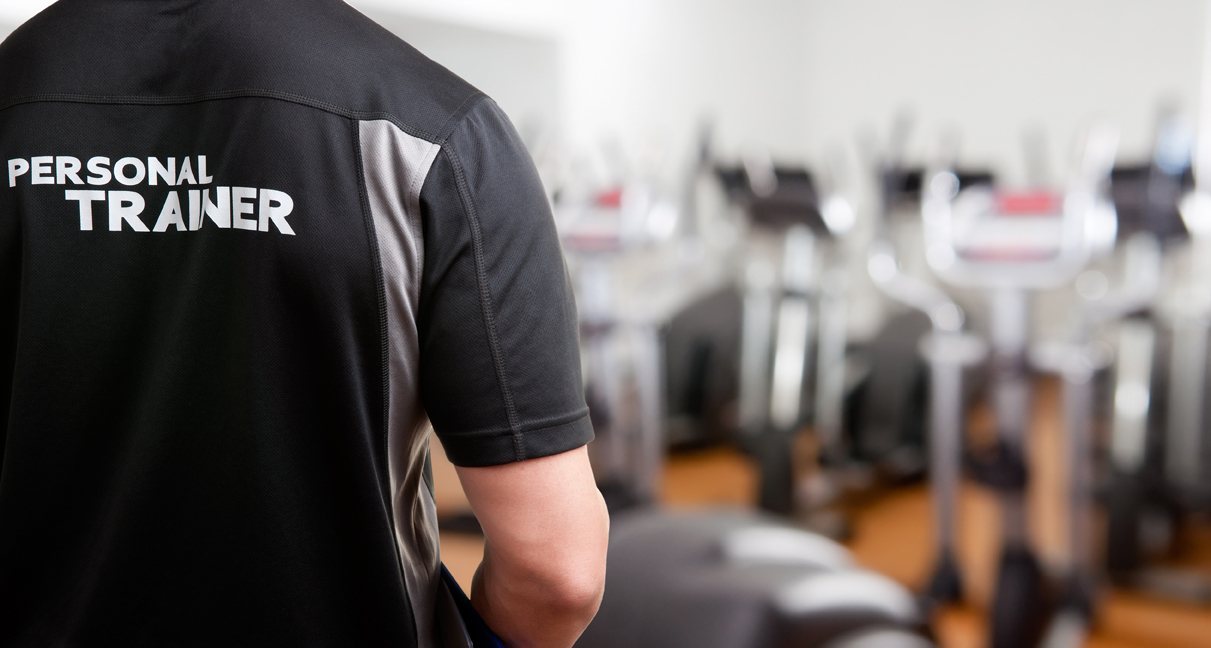
Like most decisions and processes you implement, you always start with evaluating where the member journey begins. In 2021, the member journey begins online. If your website, social pages, and review sites (google, yelp, etc.) are where members are beginning their journey, then it only makes sense to have a tech stack that’s conducive to having them complete their journey online. Questions that you should be asking yourself are:
A common barrier that I hear from clubs is having several systems that fail to “talk” to each other. For instance, if your website doesn’t speak to your Customer Relationship Management (CRM) system, and your CRM doesn’t speak to your Club Management System (CMS) then you are inadvertently creating 3 data silos that you must either sync via API or update manually.
Ideally, once a member joins online, the data they provided is entered into your CMS real-time. This ensures that they have a seamless member journey. From the moment they sign up, they should be entered into a “Welcome” cadence in the CRM system to provide complimentary workouts to get them started on their new fitness journey. This is just one member journey example that is enabled by having the right combination of technology, or your member journey “ecosystem”.
When it comes to your return on investment, we need to consider lowering our total cost of ownership. This is achieved by consolidating technology vendors and choosing the right (best in class) technologies that “talk” to each other optimally to achieve a seamless member journey.
Customer Relationship Management – Member Management (Billing & Collections) – Member Experience – Fitness Engagement – Organizational Data/Dashboard – All are critical to successful operations.
I’m a big fan of ABC Fitness Solutions, GymSales, Trainerize, Fitness BI, and MXMetrics to handle these critical areas for success.
Reprinted with permission from Bill McBride.
Bill is the President & Chief Executive Officer of Active Wellness, Active Sports Clubs & BMC3 Consulting. He is a health club industry veteran with over 25 years of experience leading and managing all aspects of commercial health clubs, medical fitness centers, residential, community, multi-tenant and corporate fitness sites.
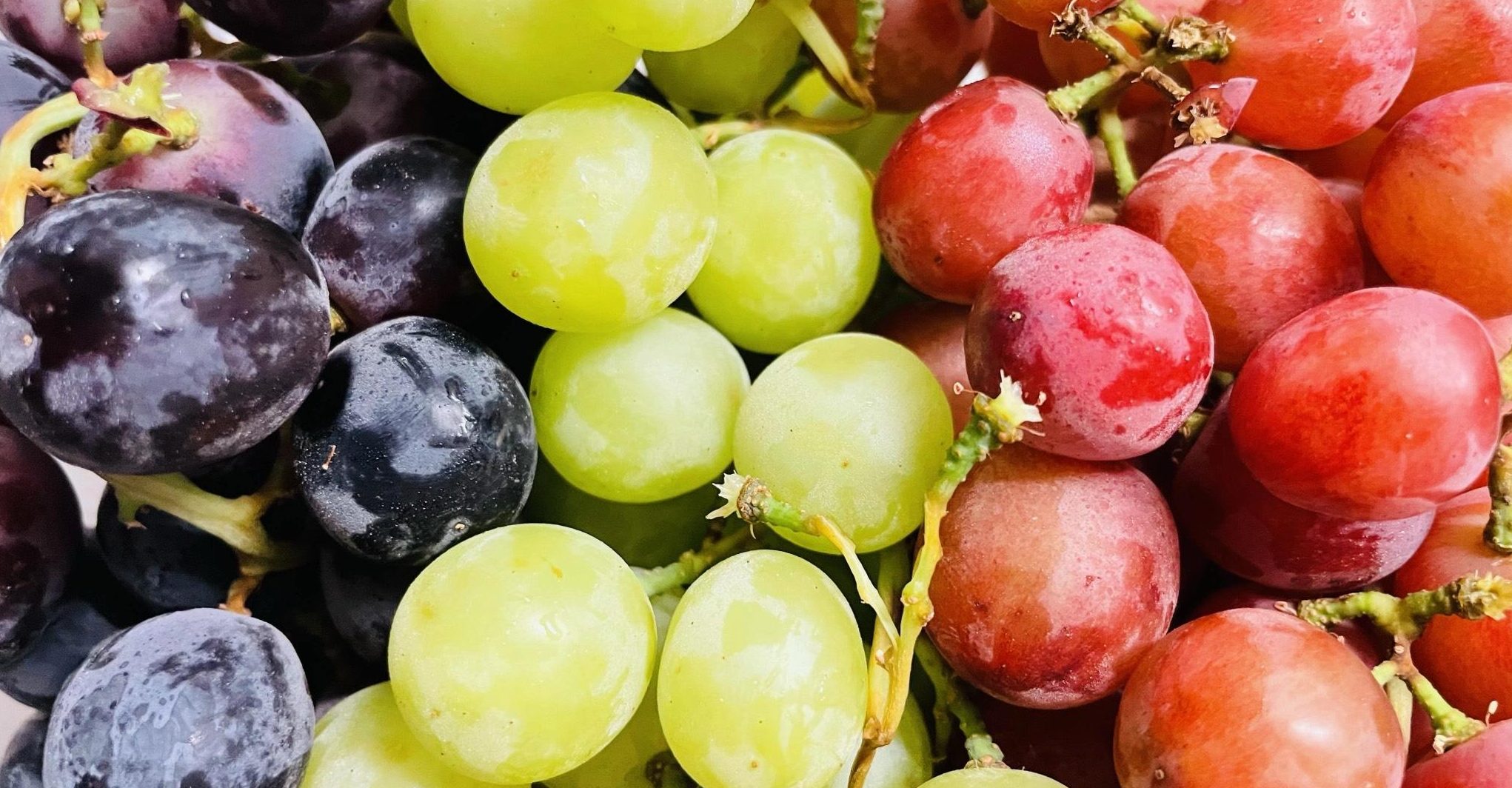
One step in activating the Ageless Algorithm is to eat and supplement intentionally. Supplements should be regarded as augmentations and not dependencies.
There is a plant for every ailment and attribute. I have a growing collection of botanical extracts on my shelf. For maximum benefit, shelve any illogical skepticism about the fruits of spaceship Earth.
The overall shift to noninvasive medicine and healthcare that gets back to nature will support longevity and immortality very directly through vital nutrients.
Consider the immortal Hippocrates quotation “let thy food be thy medicine” with the photo of the grapes above. Grape skin contains Reservatrol, a substance linked to numerous benefits including brain health. Although it is found concentrated in supplement form, the benefit and easy (tasty) access of whole foods, in general, is clear.

Another compound identified in connection with longevity is NAD+ or Nicotinamide Adenine Dinucleotide, associated with adult stem cell production. That too comes in supplement form, yet it is also available in foods like fish and mushrooms.
[Aside] And by the way: “Research into adult stem cells has been fueled by their abilities to divide or self-renew indefinitely and generate all the cell types of the organ from which they originate — potentially regenerating the entire organ from a few cells.” — Science Daily. This is kind of funny to extract what we already have inside of us and put it back in, which implies that perhaps what we also need is a new level of awareness.
In another article, Examining Biological Immortality in Nature, I identified the disaccharide sweetener Trehalose as possibly beneficial, given its production by some plants and animals as a protective crystallization against the elements or in a period of dormancy.
Deliberate choice of intake, rich in vitamins and minerals, enhances bodily processes and therefore quality of life.
In support of the adage “you are what you eat,” having as many live foods with active enzymes as possible is the way to go. You may already have many beneficial ingredients on hand, like turmeric (curcumin) or apples and onions (quercetin). This is naming just a few of millions.
Knowing and learning the usefulness and value of plants makes them even more effective. Such is the power of intention plus understanding.
Sarah Ikerd is a USA Weightlifting Level 2 Coach and Technical Official, as well as a business owner and artist who resides in Boston, MA. Visit her website, studio-shangri-la.com
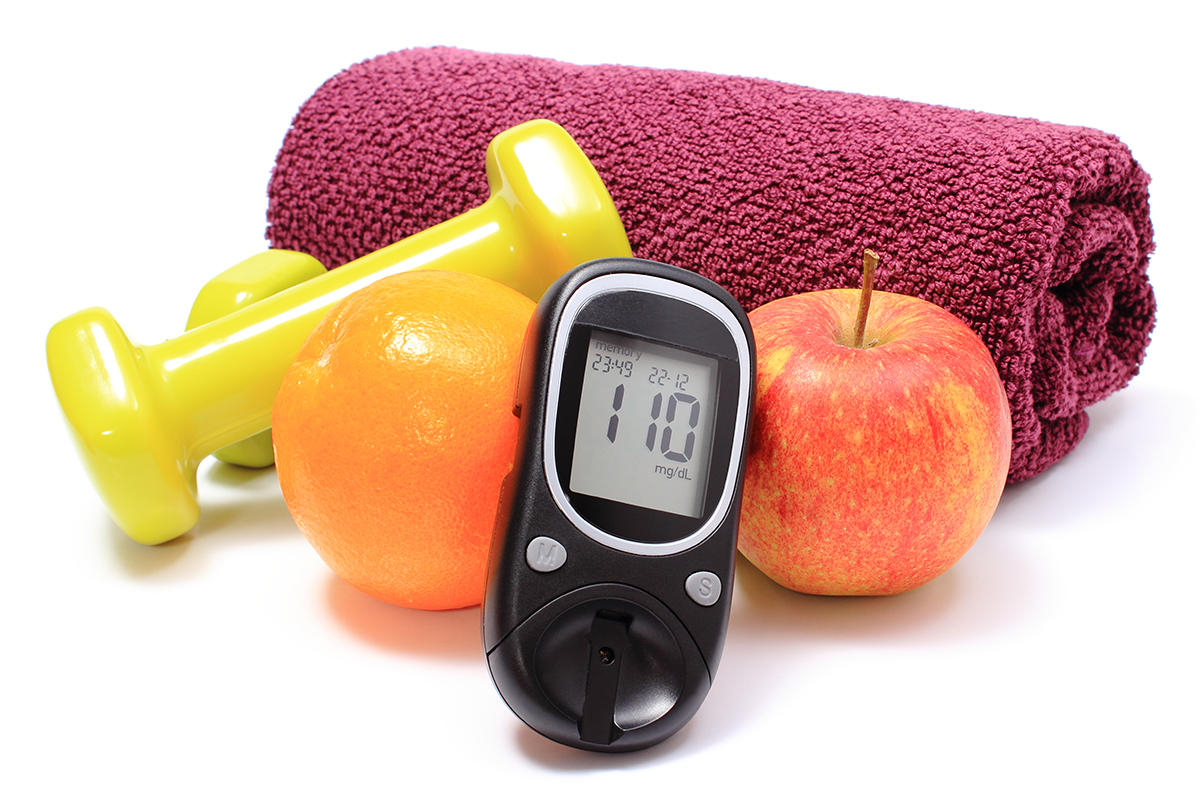
The incidence rate of type 2 diabetes has been increasing in the United States for the past 40 years. In fact, the American Diabetes Association estimates that at least half of all US adults (over 65 million people) have pre-diabetes or full-blown diabetes. It is often underreported on death certificates, and is probably the third leading cause of premature death in the US.
So why is there such an increase in diabetes in this country? The biggest reason is diet.
From a young age, children are eating processed food. When they enter school – lunchrooms in many school districts are sponsored with food from McDonald’s, Pizza Hut, and Coca Cola. In college – most dorm food is also like fast food, and they can eat as much as they want. That and their foray into alcohol, and we have the beginnings of obesity, insulin resistance, and pancreatic damage. The very concept of type 2 diabetes used to be called “adult diabetes”. Since many teenagers are now diagnosed, it’s now time to change the name.
One would say that if diabetes is a disease of the foods that you eat, then simply change the foods you eat. Not that simple. Once you’re diagnosed with diabetes, you become a ward of the medical system. Doctors will perform a lot of tests, take blood, and prescribe both insulin and drugs to mimic the glucose-lowering effects of the body, and many spend a minimal amount of time counseling on the right type of diet for your needs.
There are, in fact, many good diets to lower blood sugar, like the well-known Keto diet, which emphasizes higher fats and low carbohydrates. This is something that doctors have been prescribing in one form or another since the Atkins diet in the 1960s. What about vegetarian and vegan diets? If you ask Dr. John McDougall, one of the nation’s leading plant-based doctors, he would advocate that a diet higher in plant-based carbohydrates is better for the body than high amounts of meat and cooking oils.
Both may have a point, but if you look at the food choices that most Americans have, they walk into a grocery store, and if they’re not savvy enough to shop on the outside isles (fruits, vegetables, meats, cheeses), they are trapped in an endless cycle of boxed cereals, candy bars, frozen foods, soft drinks and alcohol. It is almost impossible to go to a store and not pick up about 50-75% of food from a box, bucket or bottle. Many still haven’t put two and two together — that the foods they eat now will have an effect on their physiology and medical status in 5-20 years.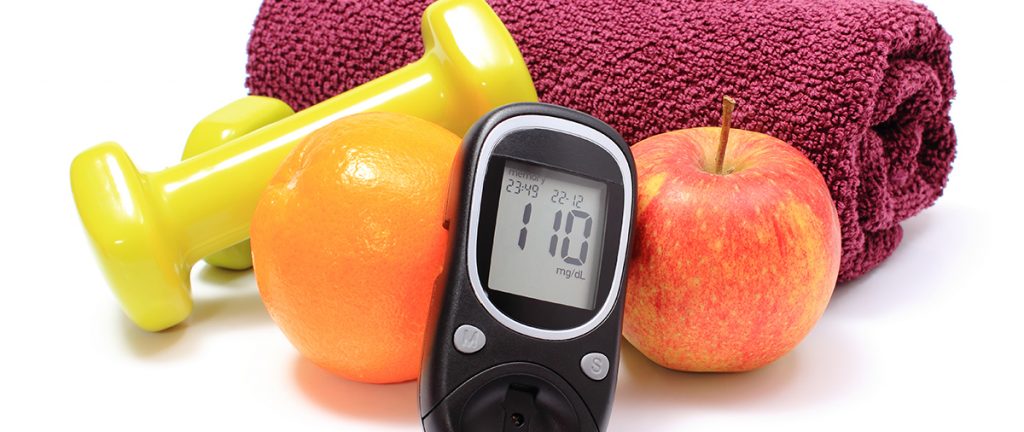
So what’s missing? I have been in an interesting position of working in diabetes research in the 1980s, and watching from the sidelines the work, research, and policy in this area of medical care for the past 30 years. Here are my thoughts.
First, although exercise is touted as part of the trilogy of treatment for diabetes (along with diet and insulin), it is the first to be discarded for another type of treatment that is expedient and profitable.
Second, there are little, if any, referrals to the health club sector in order to work on basic exercise programs for persons with diabetes. Even moderate types of programming will results in dramatic drops in body weight (and fat), daily blood sugars, and A1c levels. It simply is not being done. Many in allied health scream that personal trainers and fitness instructors are not qualified to teach exercise programs for diabetes. With the advent of medical fitness over the past 20 years, this simply isn’t the case today. I would think that having a mechanism to get patients into health clubs through their health plan, or Medicare, or a revolving door policy with their physician group, would be an outstanding way to get more patients into the exercise routine.
Third, people who work in the fitness industry should be looking very carefully in getting diabetic persons into their facilities in their communities. This takes an effort with health club trainers, club managers and company owners to reach out to the medical community through health programs, lectures, fairs and membership discounts in order to get patients in the door. It may even entail home exercise visits, or online coaching where patients are taught programs, and keep their exercise routines times and exercise notes.
Lastly, the fitness industry needs to move into the technology realm and look at the effects of exercise on patients both over 3-4 weeks, but also 3-4 years. This will be done through outcomes-based software programs that can be detailed to physicians, health plans, and sports medicine journals. Once the majority of medical fitness centers and health clubs are on board, we will see a changing of the guard in terms of what Americans think is the best type of treatment program to reduce diabetes symptoms, and look at the data of how people exercise, and how many of their health risks are being reduced by a challenging and consistent exercise program. This can be done at any age, and at almost every state of diabetes — whether they are newly diagnosed, or have basic complications that they are dealing with regarding long-standing diabetes.
It is time to embrace exercise as part of a diabetes prevention and reduction strategy. If not, in 20 years we will probably see the epidemic at such a high level, that a good portion of Americans will not be able to work due to their complications. The costs to society will be even higher than they are now. It’s a risk we don’t need to take, because of the untapped market of over 31,000 health clubs in the US, there is virtually no reason not to engage in exercise. It would seem that our nation’s health depends on our next steps – literally.
Eric Durak is President of MedHealthFit – a health care education and consulting company in Santa Barbara, CA. A 25 year veteran of the health and fitness industry, he has worked in health clubs, medical research, continuing education, and business development. Among his programs include The Cancer Fit-CARE Program, Exercise Medicine, The Insurance Reimbursement Guide, and Wellness @ Home Series for home care wellness.